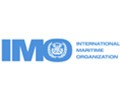South Africa Coal Exports: Are They Still a Factor in the Dry Bulk Market
 South African coal exports were always one of the dry bulk market’s most important trades. Based on the latest available data, during 2020, South Africa’s coal exports were increased. In a recent report, shipbroker Banchero Costa said that “South Africa is the fourth largest exporter of coal in the world, after Australia, Indonesia and Russia. In calendar 2019 the country exported a total of 67.4mln tonnes of coal by sea, according to Refinitiv vesseltracking data. South Africa’s economically recoverable coal reserves are estimated at between 15 and 55 billion tonnes. 96% of reserves are bituminous coal; metallurgical coal accounts for approx. 2% and anthracite another 2%. Production is mainly steamcoal of bituminous quality.
South African coal exports were always one of the dry bulk market’s most important trades. Based on the latest available data, during 2020, South Africa’s coal exports were increased. In a recent report, shipbroker Banchero Costa said that “South Africa is the fourth largest exporter of coal in the world, after Australia, Indonesia and Russia. In calendar 2019 the country exported a total of 67.4mln tonnes of coal by sea, according to Refinitiv vesseltracking data. South Africa’s economically recoverable coal reserves are estimated at between 15 and 55 billion tonnes. 96% of reserves are bituminous coal; metallurgical coal accounts for approx. 2% and anthracite another 2%. Production is mainly steamcoal of bituminous quality.
According to the shipbroker, “the vast majority of coal exports from South Africa are loaded at Richards Bay port in KwaZuluNatal, on the east coast of the country. Occasionally, some cargoes are loaded at nearby Durban port. In the past, South Africa was able to benefit from its location to be a swing supplier to both the Atlantic and Pacific basins. This is no longer the case, as coal demand in Europe has largely evaporated in recent years. This has left South African exporters largely dependent on the Asian markets, where they face tough competition from Indonesian and Australian suppliers”.
Banchero Costa added that “South African coal exports have been generally shrinking in recent years, due to a combination of lower production and lack of competitiveness, but have actually done surprisingly well this year. In the first 11 months of 2020, South Africa exported 63.6 mln tonnes of coal by sea, according to vessel tracking data from Refinitiv. This represents an increase of +3.9% y-o-y, compared to the 61.2 mln tonnes exported in the same eleven-month period of 2019. The year can be essentially divided into a really disappointing first half and a much better then expected second half”.
“The first quarter of 2020 was really mixed, with South Africa exporting 16.7 mln tonnes of seaborne coal, which was a +2.9% increase on the same period last year. This consisted of a good January 2020 with 6.3 mln tonnes (up +43.4% y-o-y from an exceptionally poor January 2019) and a disappointing March 2020 with 5.5 mln tonnes(down -17.1% y-o-y). The second quarter of 2020 was a disaster, as Indian demand in particular evaporated on lockdown and economic recession. In the period April-June 2020, seaborne coal exports from South Africa declined by -12.9% year-onyear to 15.7 mln tonnes. Things then rebounded strongly in the third quarter, with demand from India but also from China and Vietnam picking up. In the Jul-Sep period, South Africa exported 17.2 mln tonnes of coal, which was a +19.6% increase from the 14.4 mln tonnes exported in the same quarter last year. Overall, exports to India, the top destination of South African coal with a 50% market share, are still down this year.
Just 31.6 mln tonnes were shipped to India in the first 11 months of this year, down -7.3% y-o-y. On the other hand, shipments to Vietnam surged spectacularly to 5.2mln tonnes in Jan-Nov 2020, up from just 0.4 mln tonnes in the same period last year. Vietnam is now the third largest destination for South African coal after India and Pakistan. Exports to Mainland China are also up +101% y-o-y to 3.6 mln t. However to South Korea shipments are down by -64.8% y-o-y to 1.4 mln tonnes”, Banchero Costa concluded.
Nikos Roussanoglou, Hellenic Shipping News Worldwide

 Hellenic Shipping News Worldwide Hellenic Shipping News Worldwide, Online Daily Newspaper on Hellenic and International Shipping
Hellenic Shipping News Worldwide Hellenic Shipping News Worldwide, Online Daily Newspaper on Hellenic and International Shipping

























 PG-Software
PG-Software